There’s something undeniably calming about a walk through the woods—the dappled light, the soft rustle of leaves, and the quiet beauty of wild forest blooms. The good news? You don’t need a cabin in the mountains to recreate that peaceful vibe. With the right woodland flowers, you can bring the soothing energy of a forest floor straight into your own backyard.
This list highlights 22 woodland flowers that not only thrive in shady spots but also fill your garden with the charm and natural serenity of native woodlands. From delicate spring ephemerals to lush, leafy perennials, these plants offer low-maintenance beauty and a soft, organic aesthetic that turns even a small yard into a forest retreat.
Bluebells
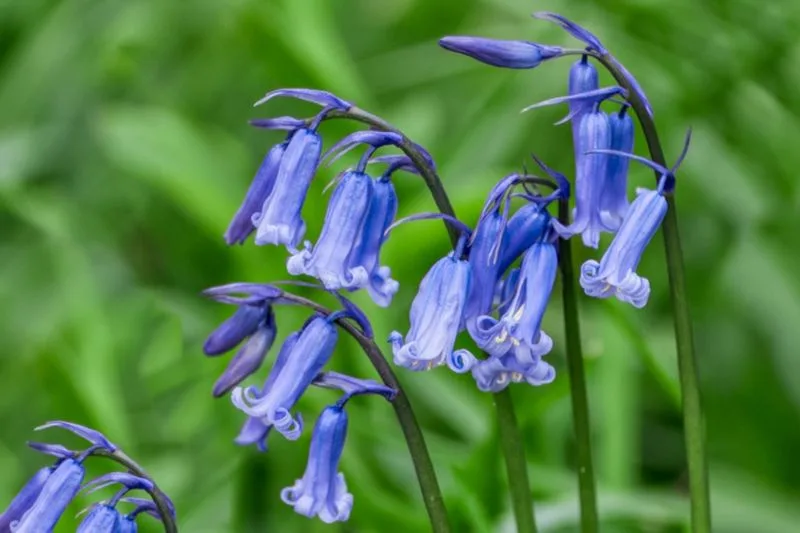
Nestled in the heart of ancient forests, bluebells offer a mesmerizing carpet of blue that captivates all who wander by. Their delicate blooms nod in the breeze, creating a serene rhythm that enhances any woodland setting. As spring announces its arrival, bluebells unfold their charm, inviting bees and other pollinators to dance among them.
A stroll through a bluebell wood is an experience of pure tranquility, where the vibrant blue contrasts beautifully with the green canopy above. In your backyard, they promise to bring this peaceful essence, transforming your garden into a haven of calm.
Trillium
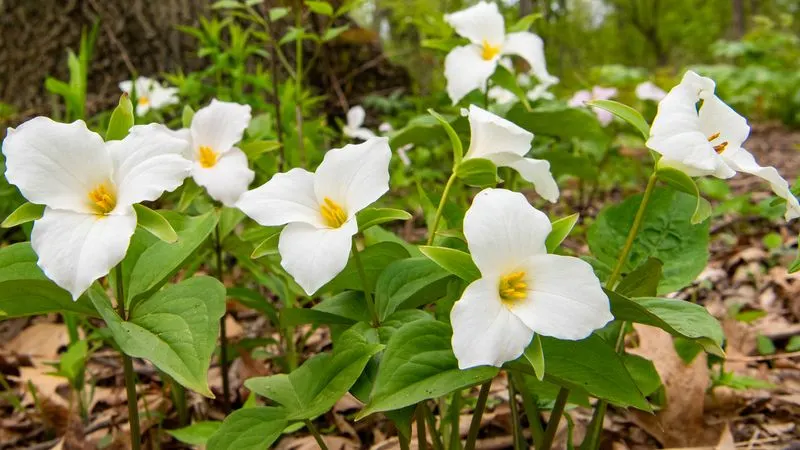
Trilliums, with their distinctive three-petaled flowers, are a springtime jewel in woodland settings. Often found gracing the forest floor, they herald the arrival of warmer days with understated elegance. The simplicity of their form, combined with their striking beauty, makes them a favorite among nature enthusiasts.
These graceful flowers thrive in shaded areas, adapting effortlessly to garden spaces that mimic their natural habitat. Planting trillium in your backyard creates a connection to the quiet elegance of the forest, bringing a touch of sophistication to your outdoor haven.
Wood Anemone

Wood anemones bring a burst of life to the quiet forest floor, their white blooms resembling stars scattered across a green canopy. These flowers are early bloomers, signaling the arrival of spring with a subtle yet enchanting presence.
Their delicate nature and soft petals create a picturesque view, perfect for adding a gentle touch to your garden. As they sway in the breeze, wood anemones capture the essence of woodland serenity, inviting you to pause and appreciate the fleeting beauty of nature.
Foxglove

Foxgloves, with their towering spikes of bell-shaped flowers, command attention in any garden setting. Their vibrant hues range from soft pinks to rich purples, creating a striking visual display that draws the eye upward. These flowers are not just beautiful but also attract a host of pollinators.
In woodland gardens, foxgloves bring a vertical element that adds depth and interest. Their presence is both bold and graceful, offering a dynamic contrast to lower-growing plants. Embrace the charm of foxgloves to infuse your backyard with woodland wonder.
Jack-in-the-Pulpit
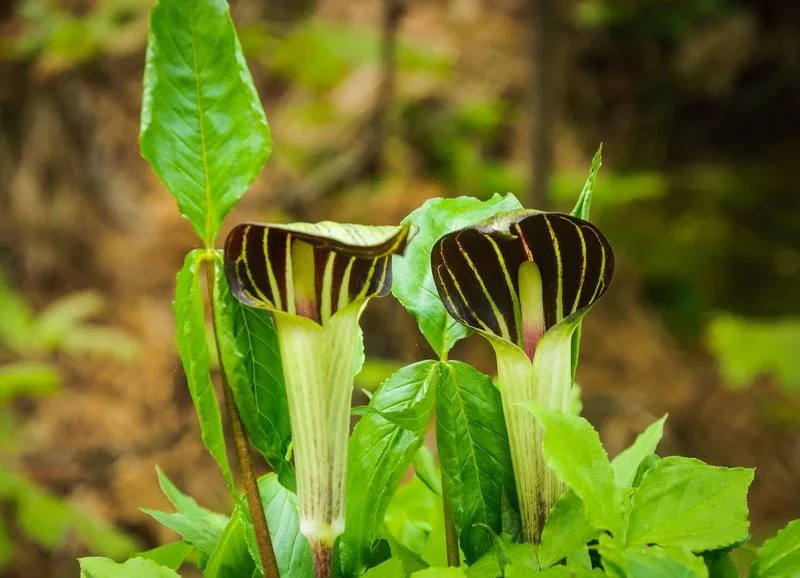
The intriguing Jack-in-the-Pulpit is a conversation starter in any woodland garden. Its unique structure, with a hooded spathe over a slender spadix, resembles a preacher in a pulpit, hence its name. This plant adds a whimsical touch to your garden with its unusual form.
Thriving in shady, moist areas, Jack-in-the-Pulpit is perfect for gardens that emulate natural woodland conditions. Its striking appearance is complemented by its ability to blend seamlessly into the surrounding greenery, offering an unexpected delight for garden visitors.
Solomon’s Seal

Solomon’s Seal brings an air of grace and elegance to shaded corners of a woodland garden. Its arching stems, adorned with pairs of dangling white flowers, create a gentle cascade effect that is both soothing and sophisticated.
As the seasons change, the flowers give way to dark blue berries, adding another layer of interest. This plant thrives in dappled shade, making it ideal for areas that mimic its native forest habitat. Solomon’s Seal offers understated beauty, enhancing the tranquility of your outdoor retreat.
Columbine
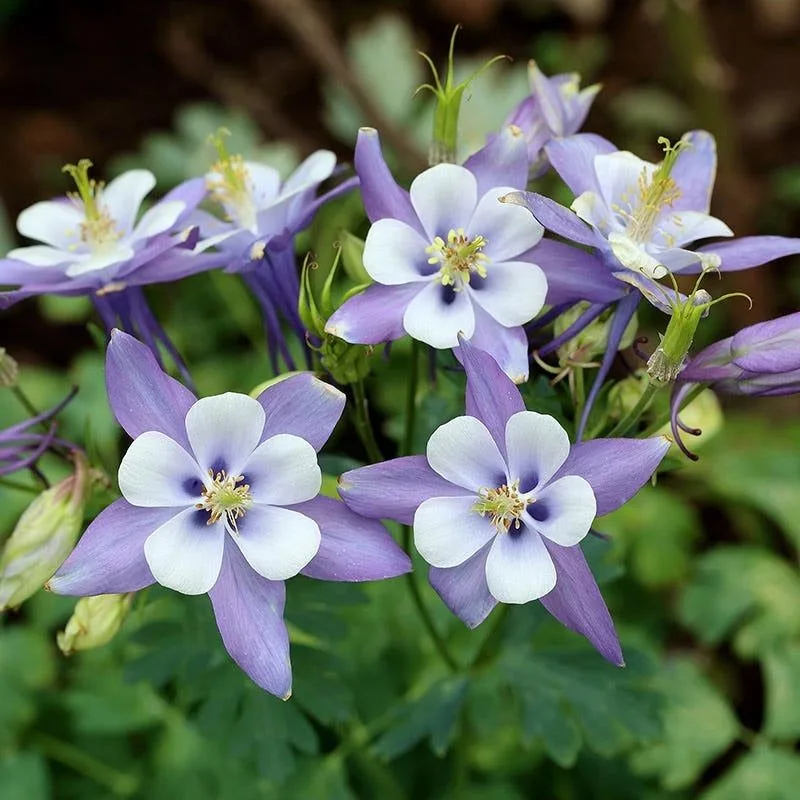
Columbines offer a burst of color and whimsy to woodland gardens. Their spurred petals and striking color combinations make them a delightful addition to any shaded area. These flowers are known for their ability to attract hummingbirds, adding a lively dynamic to your garden.
With their nodding blooms, columbines create an enchanting focal point. They thrive in well-drained soil and dappled sunlight, making them versatile and easy to grow. Introducing columbines to your garden invites a touch of woodland magic, encouraging a closer connection with nature.
Lady’s Slipper Orchid

Lady’s slipper orchids are a rare treasure in the world of woodland flowers. Their unique slipper-shaped blooms are a marvel of nature, captivating all who encounter them. These orchids thrive in forested areas, preferring the filtered light and rich soil of their native habitats.
While they require specific conditions to grow, their beauty is well worth the effort. The lady’s slipper orchid brings a touch of exotic elegance to your garden, transforming it into a sanctuary of refinement and allure.
Bloodroot
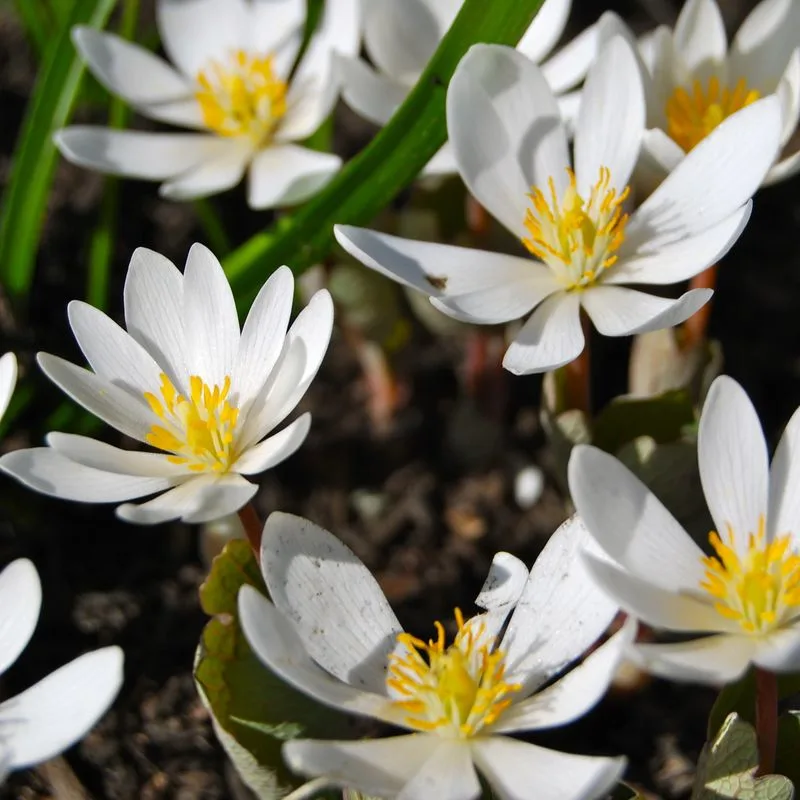
Bloodroot is an early spring bloomer, its pristine white petals and golden centers heralding the season’s change. Named for the red sap in its roots, bloodroot has a rich history in traditional medicine and folklore.
This woodland flower thrives in shaded, moist areas, making it perfect for forest-like garden settings. Its fleeting blooms are a reminder of the ephemeral beauty of nature, adding a delicate touch to your backyard haven. Bloodroot invites a sense of wonder and appreciation for the cycles of the natural world.
Mayapple

Mayapples create a whimsical undergrowth with their large, umbrella-like leaves that provide dappled shade for smaller plants. In spring, a single white flower emerges beneath the foliage, adding a touch of intrigue to this woodland favorite.
Known for their unique growth habit, mayapples are a captivating addition to any garden looking to replicate the layered beauty of a forest floor. They thrive in rich, well-drained soil and appreciate the gentle embrace of morning sun. Mayapples offer a playful yet harmonious element to your garden’s design.
Virginia Bluebells

Virginia bluebells are a true delight with their clusters of bell-shaped flowers that transition from pink to blue as they mature. These enchanting blooms create a soft, romantic atmosphere in any shaded garden.
Thriving in moist, rich soil, Virginia bluebells are ideal for naturalizing in woodland settings. Their ephemeral beauty is a spring spectacle, drawing pollinators and admiration alike. By incorporating these flowers into your backyard, you invite a fleeting yet unforgettable touch of woodland grace to your landscape.
Dutchman’s Breeches
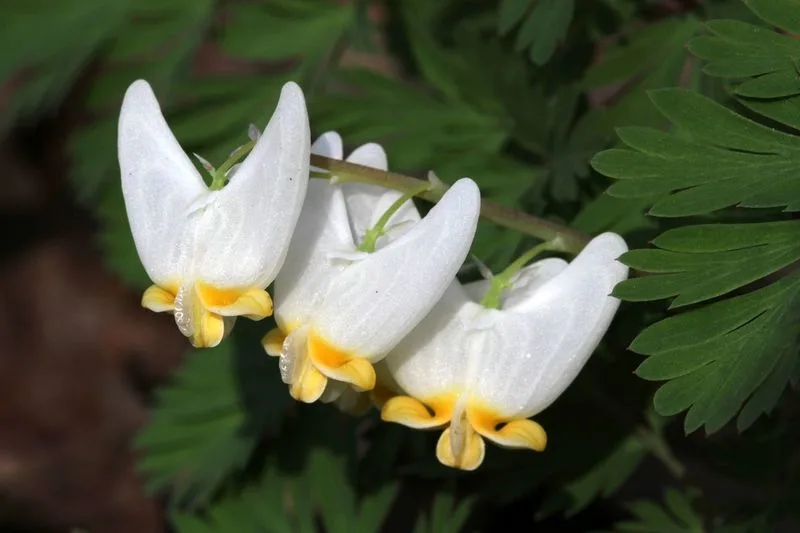
Dutchman’s breeches are sure to capture attention with their charming, pants-shaped flowers. These delicate blooms dangle gracefully from slender stems, resembling an old-fashioned clothesline filled with tiny trousers.
Found in rich, wooded areas, they add a playful element to any garden space. These flowers prefer shaded spots with well-drained soil, making them perfect companions for other woodland plants. By adding Dutchman’s breeches to your garden, you introduce a whimsical charm that brings smiles and curiosity to all who visit.
Solomon’s Plume
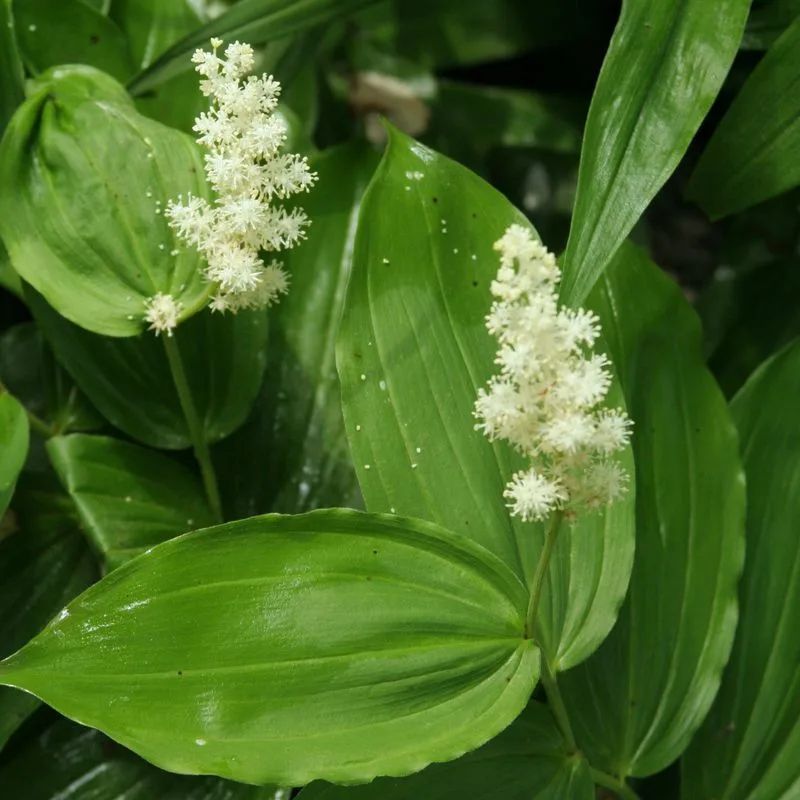
Solomon’s plume, also known as false Solomon’s seal, captivates with its feathery white flowers that cascade gracefully from arching stems. This woodland beauty adds a sense of movement and lightness to shaded garden areas.
Thriving in moist, well-drained soil, Solomon’s plume complements the tranquility of forest-like settings. As the flowers fade, they give way to clusters of red berries, offering seasonal interest and a food source for birds. The addition of Solomon’s plume to your garden enhances its soft elegance, creating a serene retreat.
Hepatica
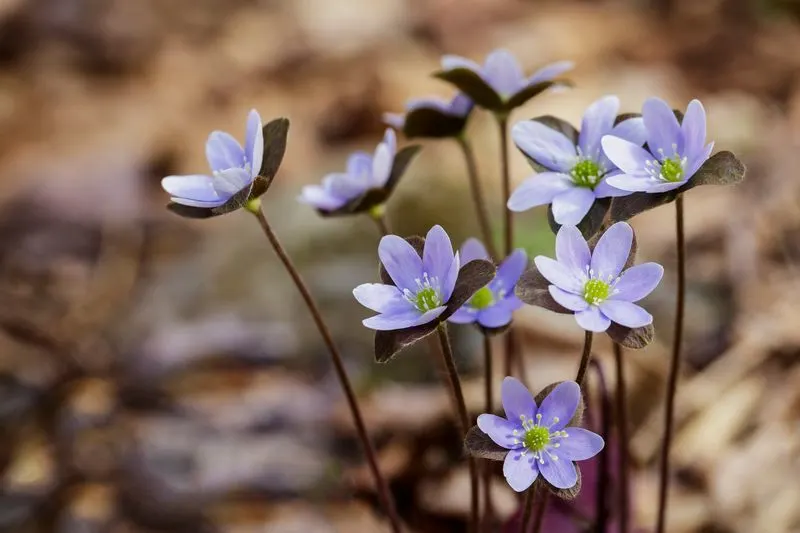
Hepatica is a herald of spring, known for its charming blooms that vary in color from blue to pink and white. These dainty flowers emerge from the forest floor, often pushing through the remnants of last autumn’s leaves.
Their resilience and beauty make hepatica a delightful addition to woodland gardens. Preferring shaded areas with well-drained soil, they provide an early splash of color and cheer. Hepatica invites you to celebrate the changing seasons and the renewal of life in your own backyard sanctuary.
Wild Geranium

Wild geraniums, with their soft pink blooms, bring a gentle charm to woodland gardens. These flowers thrive in shaded to partially shaded areas, where their blossoms attract a variety of pollinators.
Their expansive green foliage adds a lush texture, creating a harmonious backdrop for the delicate flowers. Wild geraniums are easy to grow and maintain, making them an ideal choice for gardeners seeking low-maintenance beauty. Incorporating wild geraniums into your garden design offers a timeless elegance that resonates throughout the seasons.
Twinleaf

Twinleaf, named for its distinctive paired leaves, is a delicate springtime bloom that emerges briefly in woodland settings. Its white flowers are elegant and short-lived, making their fleeting presence all the more precious.
These flowers prefer rich, well-drained soil and thrive in shaded areas, replicating their natural forest habitat. Twinleaf’s understated beauty and early blooming period offer a unique charm to garden spaces, inviting contemplation and appreciation of nature’s subtle wonders.
Celandine Poppy
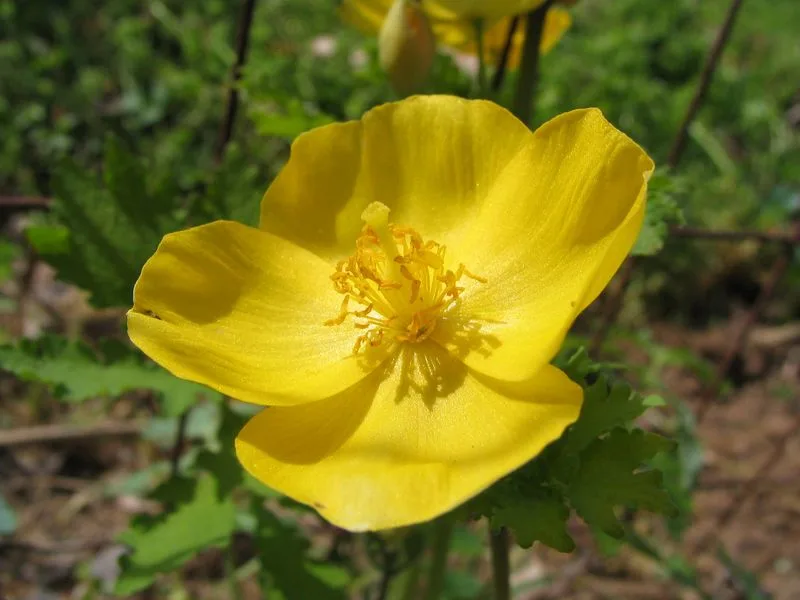
Celandine poppies light up woodland gardens with their bright yellow blooms and delicate petals. These cheerful flowers thrive in shaded areas, where their vibrant color provides a striking contrast to the surrounding greenery.
Their ability to adapt to various soil conditions makes celandine poppies a versatile choice for gardeners. They bring a lively burst of sunshine to shaded corners, creating a welcoming atmosphere for both visitors and pollinators. Add celandine poppies to your garden for a touch of brightness and warmth.
Toad Lily
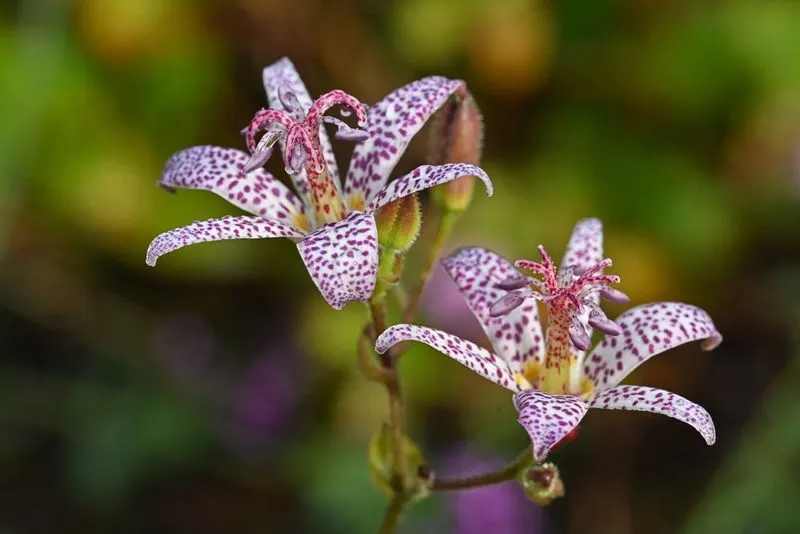
Toad lilies are a hidden gem in woodland gardens, with their exotic-looking, spotted flowers that bloom in late summer to fall. These delicate blossoms are a marvel, showcasing intricate patterns in shades of purple and white.
They thrive in shaded, moisture-rich environments, making them perfect for adding interest to woodland settings. Toad lilies offer a unique allure, drawing the eye with their unusual appearance. Incorporating these flowers into your garden introduces a sense of mystery and exotic beauty that captivates the imagination.
Wild Columbine
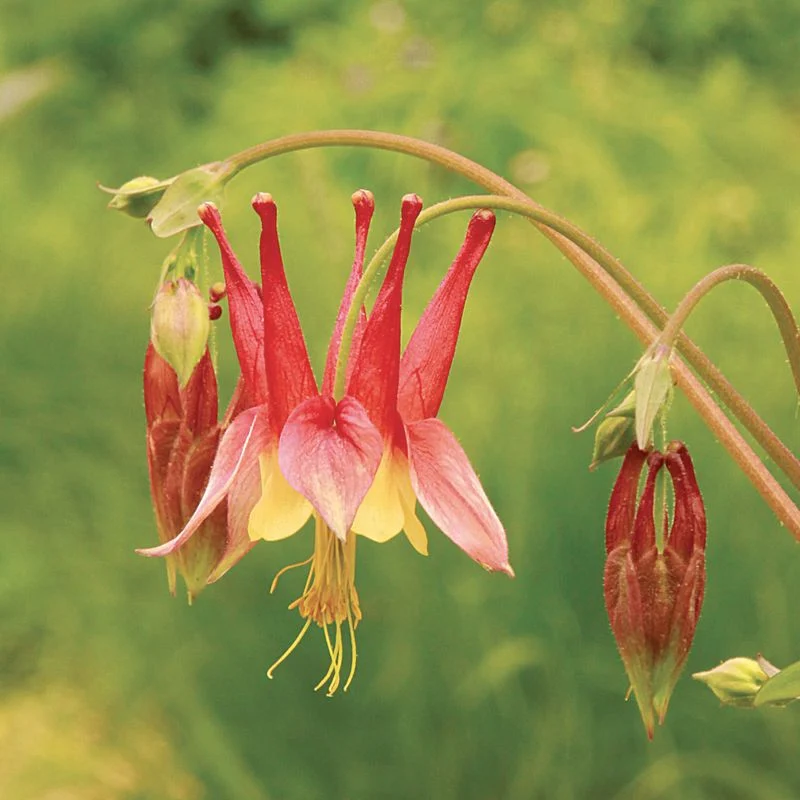
Wild columbine, with its distinctive red and yellow blooms, adds a vibrant touch to any garden. These flowers are particularly attractive to hummingbirds, bringing lively activity to shaded areas.
Their delicate, nodding blooms evoke a sense of whimsy and playfulness, enhancing the natural charm of woodland gardens. Wild columbine thrives in well-drained soil and partial shade, making it an excellent choice for adding color and movement. By choosing wild columbine, you invite dynamic energy and a splash of color into your backyard retreat.
Lily of the Valley

Lily of the valley is a classic woodland flower, known for its sweetly scented, bell-shaped blooms. These delicate flowers create a carpet of white against their rich green foliage, adding a touch of elegance to shaded garden areas.
Thriving in moist, well-drained soil, lily of the valley is perfect for naturalizing in woodland settings. Their fragrance and beauty make them a charming addition to any garden, offering a nostalgic nod to traditional gardening. By planting lily of the valley, you embrace timeless grace and fragrant allure.
Trout Lily
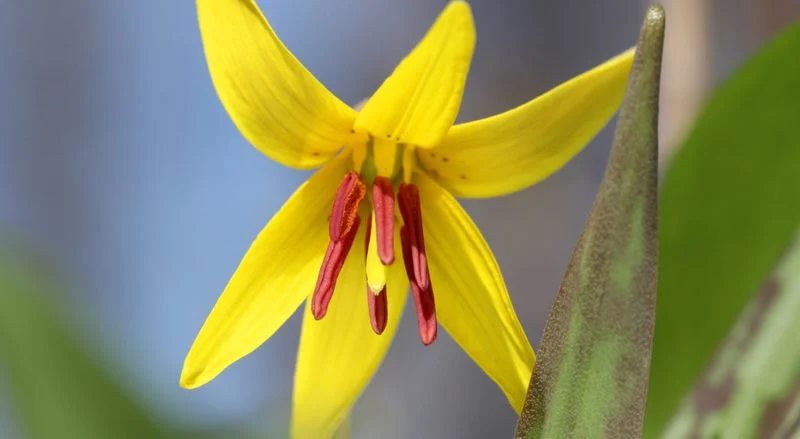
Trout lilies, with their distinctive yellow blooms and speckled leaves, bring a touch of spring magic to woodland gardens. These flowers often carpet forest floors, their nodding blooms creating a gentle dance in the breeze.
Named for the mottled appearance of their leaves, trout lilies thrive in shaded, well-drained areas. They herald the arrival of spring with their cheerful blooms and are a wonderful addition to gardens seeking a natural, forested look. Plant trout lilies to enjoy their fleeting beauty and the joy they bring to the spring landscape.
Mysterious Ghost Orchid
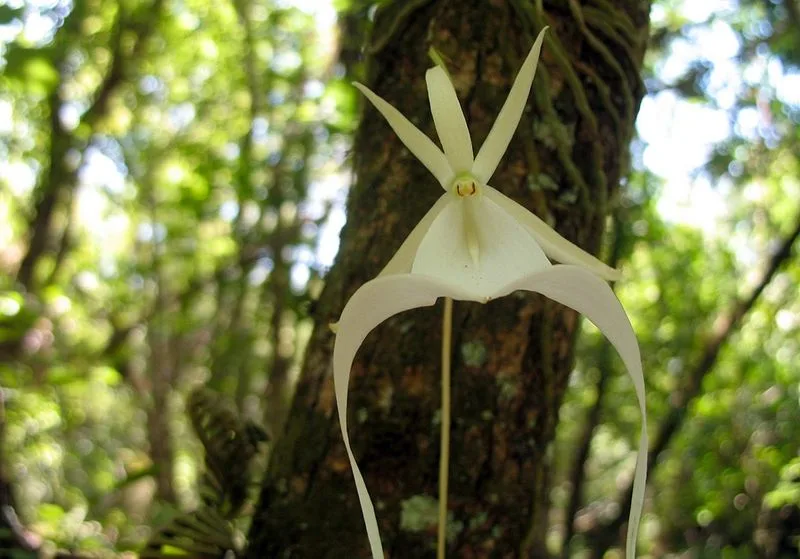
Amidst the shadows of the forest floor, the Ghost Orchid silently weaves its magic. This elusive bloom, famed for its ethereal beauty, thrives in the humid embrace of woodland swamps. Its delicate, white petals appear almost spectral, dancing gracefully in the gentle breeze.
Unlike typical garden flowers, the Ghost Orchid requires a tender touch and specific conditions to flourish. It’s a floral piece of art that whispers ancient secrets, drawing admiration from those lucky enough to witness its bloom.
Adding this orchid to your garden will surely elevate the mystique and allure of your backyard haven.

